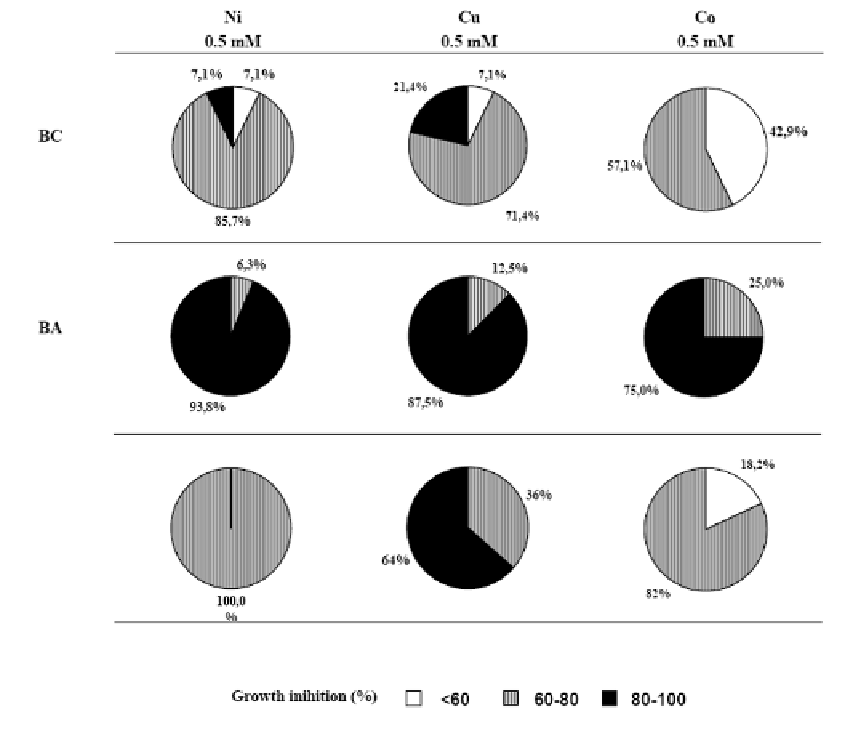Agriculture Reference
In-Depth Information
again, BC isolates showed a moderately tolerance to all essential metals tested. On the other
hand, BA isolates showed high sensitivity to all metals.
Ni
0.5 mM
Cu
0.5 mM
Co
0.5 mM
7,1%
7,1%
7,1%
21,4%
42,9%
BC
57,1%
71.4%
85,7%
6,3%
12,5%
25,0%
BA
75,0%
87,5%
93,8%
18,2%
36%
BD
64%
82%
100,0
%
Growth Inhibition (%)
<60
60-80
80-100
Figure 3 .Percentage of isolates exhibiting a growth inhibition <60% - tolerant, 60-80% - moderately
tolerant and 80-100% - sensitive in the different locations, for essential metals: Ni, Cu and Co.
Pb concentrations were extremely high in BA and BD soils, while in control soil the level
of this metal was 50 times lower. The activity of the mine ceased 50 years ago, however the
inputs of metals resulting from the old smelter and from the tunnels that access to the mine
continue to happen. Due to their localization towards the tunnels accessing to the mine and
the old smelter, BA and BD soils are easily waterlogged with water from the smelter and the
tunnels, which easily became inundated when there is heavy rainfall or floods from a nearby
river. These events take place frequently during winter, inputting heavy metals, even now, 50
years after the mine deactivation. BC soil was collected from the periphery of the mine,
where the inputs of metals at the present are low.
Nevertheless,
Rhizobium
population from BC soil shows higher tolerance to Pb and As
than the populations from BA and BD soils. Probably when the mine was laborating, BC
isolates suffered the influence of higher heavy metal concentrations, which originate a
selective pressure leading, at that time, to the appearance of genotypes with high lead
tolerance, fat already described by Bååth (1992) and Bååth
et al
. (1998) who considered the



























